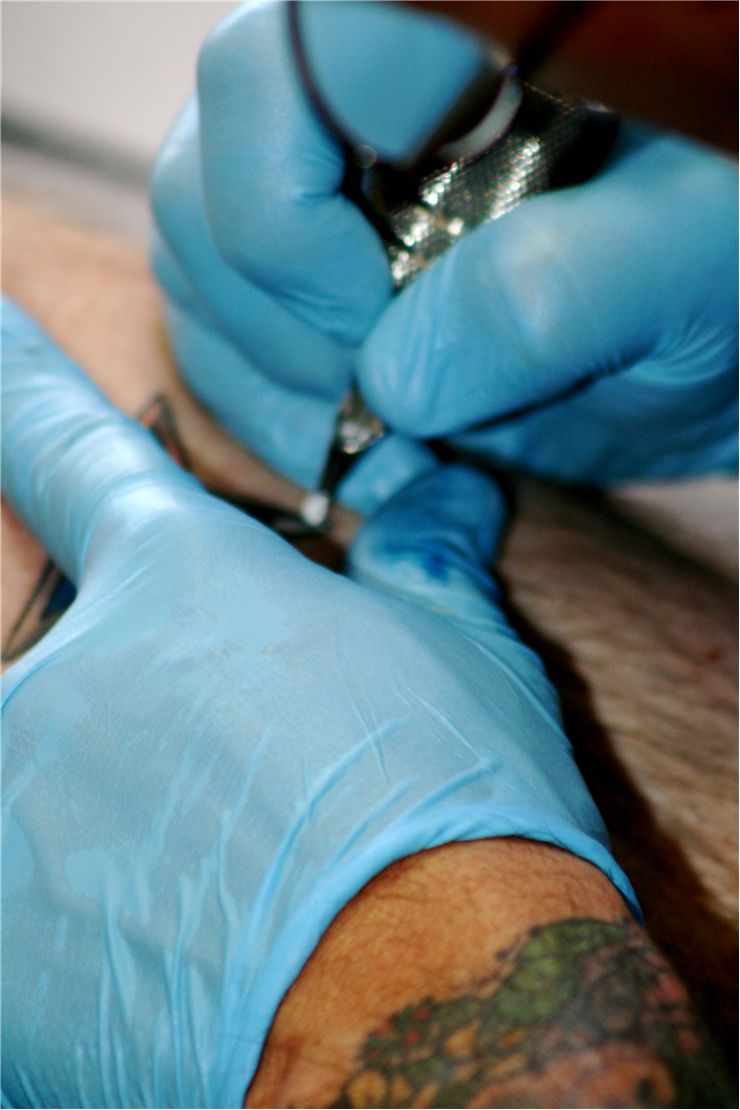Are Tattoos Safe? - Health Risks Related to Tattooing
Tattooing is a practice old as civilization but a thousand years since we started permanently painting our skin it is still not 100%-risk-free. Here are some problems that can happen with tattoos.
Infections can be transmitted with tattoo tools. These tools come in contact with blood and bodily fluids. If they are not properly sterilized they can transmit diseases like hepatitis B, hepatitis C, tuberculosis, and HIV. Most of the modern tattoo studios use single-use needles and this type of problem is rare. Amateur tattooing (like in prisons or at unlicensed tattoo parlors) is more risky.
Allergic reactions to tattoo inks are rare but possible. Skin can react to red, yellow, and sometimes white ink and when a tattoo is exposed to sunlight. Allergic skin reactions are of rash type. Commonly used tattoo inks have metallic salt and can have lead but not in quantities that can be harmful. Organic pigments that have no heavy metals can be more problematic. There is a statistic from the European Commission that 40% of organic tattoo colorants used in Europe are not approved for cosmetic use and a carcinogenic aromatic amine is in 20% of them.
Tattoos that have large areas of black ink can, in rare cases, cause problems during MRI scans. Black ink has iron oxide and MRI scanner can cause the iron to heat up by inducing an electrical current in it. Like we said, this is rare and having a tattoo should not be a reason to not get an MRI scan if necessary.
Tattoo pigments can trigger various dermal conditions like granulomas, various lichenoid diseases, cement dermatitis, collagen deposits, discoid lupus erythematosus, eczematous eruptions, hyperkeratosis and parakeratosis, and keloids.
Tattoos can cause problems even after the long time they stayed on the skin. For instance eczematous dermatitis can appear from months to as many as twenty years after the last tattoo.
Process of tattooing can produce hematoma (bruise) if a tattooing needle punctures a blood vessel. These bruises can appear as halos around a tattoo, or as one larger bruise if the blood collects in a pool and they usually heal in a week.
Some large particles from ink pigment may accumulate in lymph nodes which can cause inflammations. Lymph nodes may also become discolored from the pigment which, with inflammation, can give false flag as an indicator of melanoma. This can make diagnosing melanoma in a patient with tattoos difficult.
Blood thinners (drugs that prevent coagulation of blood) can make tattooing difficult because they make bleeding stronger. Because of that they make healing of a tattoo longer and because they “wash away” the ink it will need more time (and tattooing) to get enough ink into the skin.
General problem in United States is that The Food and Drug Administration doesn't regulate tattooing nor tattoo ink and there nobody knows for sure what is in the pigments that is used for tattooing especially in ultraviolet (UV) inks and the glow-in -the-dark inks. FDA says that “many pigments used in tattoo inks are industrial-grade colors suitable for printers' ink or automobile paint”.
